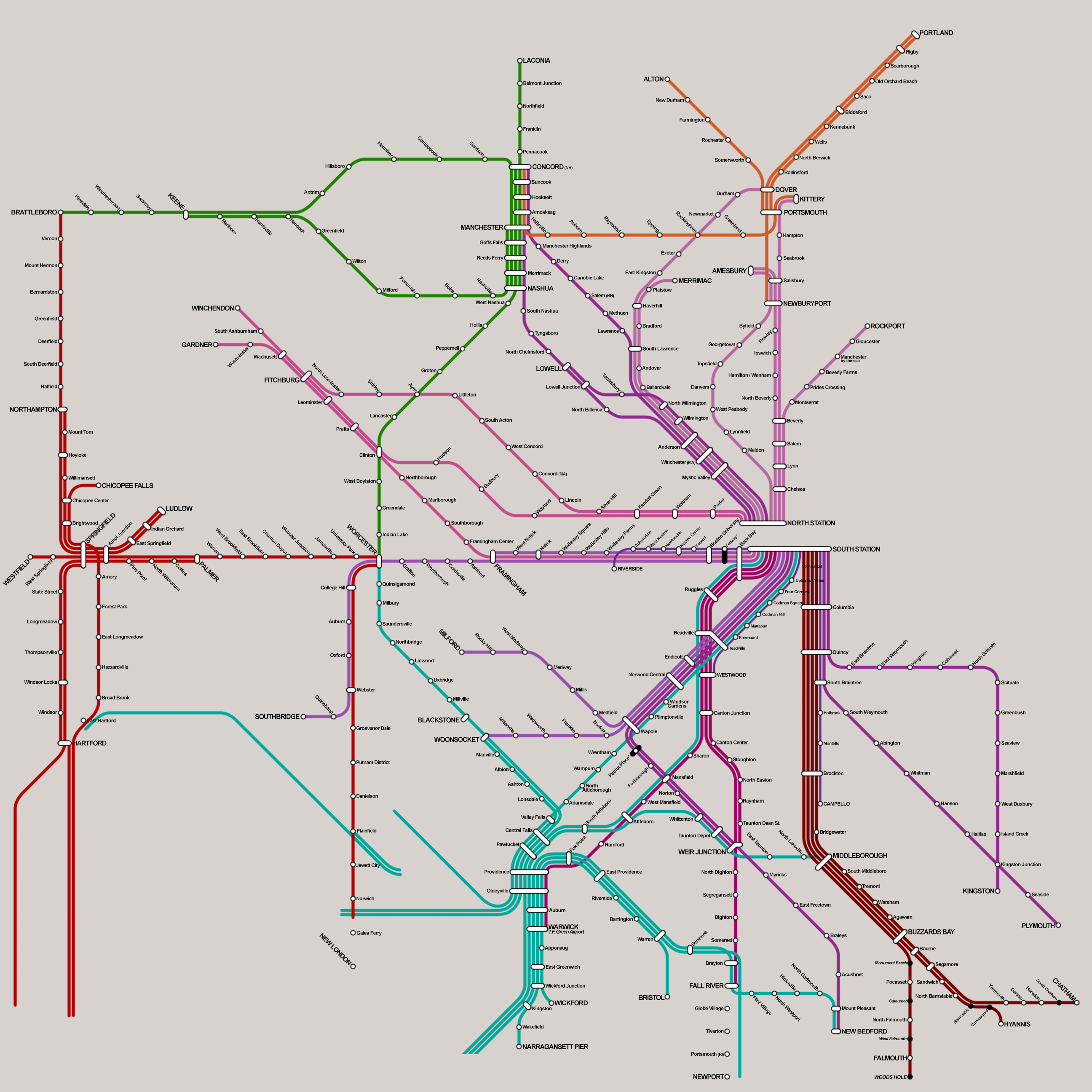I'm going to play a quick devil's advocate with regards to this whole enterprise. I have no beef with systems centered around Providence, or Springfield, or Worcester, or Nashua/Manchester/Concord. I'm also not opposed to responsibly enlarging the commuter rail out of Boston. But I don't get the need for the density and interconnectedness among all these systems. Is anyone really commuting along these patterns? Headways are never going to be so frequent on a commuter system like this that the transfers will be worthwhile for anyone. It's a pretty fantasy map, but I'm not sure what kind of fantasy it is, exactly...
Providence is already happening, they don't intend to be strapped to the T for ever. While they may contract the T to actually operate their ops, they want to be an independent system.
Same with Springfield. The New Haven-Springfield line, with an extension to Greenfield or Northampton (can't remember) is already in the works.
I ran out of room and only showed the south side, but Portland is doing something similar. They have the downeaster extensions north, independent service to Rockland, and studies on CR to L/A and other places. I don't know if it's really feasible, but they are looking at it.
If NH ever stops letting it's rails rust away something similar is likely to happen there too.
So really, this is just showing the potential service, and how it all intertwines. By combining resources, the 4/5 separate systems can work together to be greater than the sum of their parts. I envision essentially separate systems, but operated cooperatively. A rail line from Concord to Worcester doesn't make 100% sense from just a NH perspective, but with some assistance from MA it does. For commuting habits, no, transfers don't make sense/wouldn't happen. But for a regional rail view, I don't think someone making a transfer would be out of the question. Hell, I would take a train out to Brattleboro on the weekend if I only had to transfer once in Manchester.





